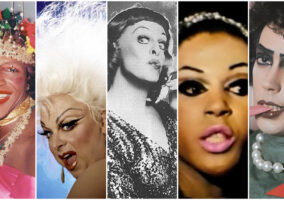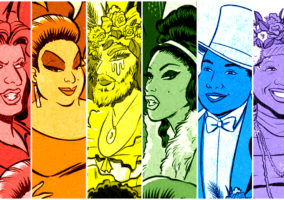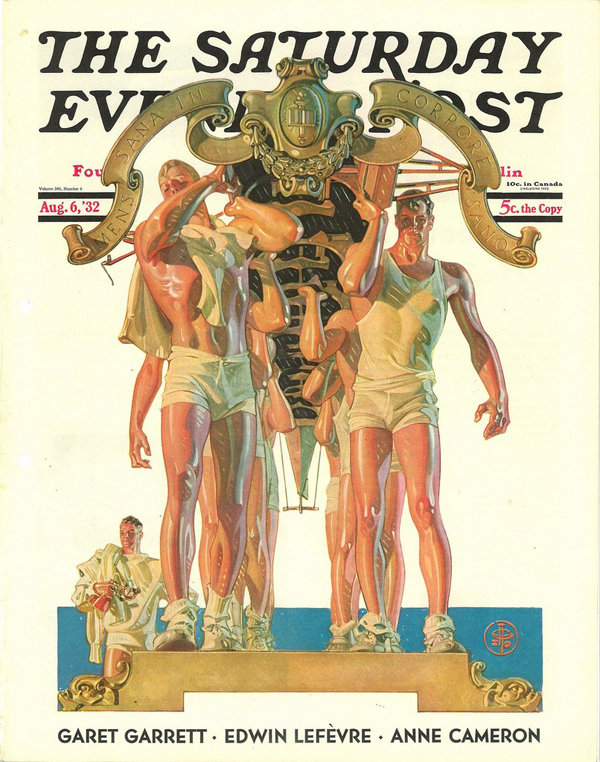
Now that our book is out and there’s enough press, reviews and supplemental material published on this site, we can finally admit something we were a bit afraid to reveal before publication date. Of all the chapters we wrote, highlighting the work of legendary queer folks and trans women in creating culture and art and fighting for queer rights, our favorite chapter – and the one that we maintain has probably the best writing in the whole book – is the one based on Drag Race’s beloved Pit Crew. What can we say? We’re shallow that way. In our defense, that’s the chapter in which we attempt to outline and contextualize a century of queer male erotic imagery in order to explain just why the members of the Pit Crew look the way they do, dress the way they do, and represent how queer male desire went from a hidden secret to an underground obsession and finally to one of the most common mass media images of male desire. Before the Pit Crew, before Speedo Queens and Muscle Marys, before Joe Dallesandro in his white briefs for Trash or Markie Mark in his Calvins, before gay porn and gay erotic art, there was one man subtly putting his queer desires out in front of the most mainstream audiences of his day, the German born illustrator of the early 20th Century, Joseph Christian Leyendecker.
Leyendecker was famous for two things: His magazine covers and his illustrations for the Arrow shirt collar, which Leyendecker began providing in 1906 and which gave the 20th Century one of its first in what would be a long line (from the Campbell’s Soup kids to Tony the Tiger) of advertising characters, The Arrow Shirt Collar Man.
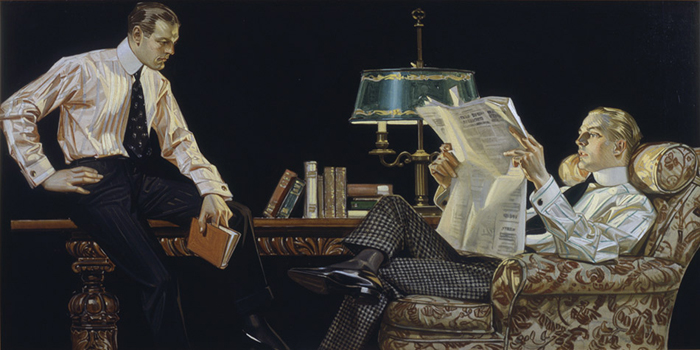
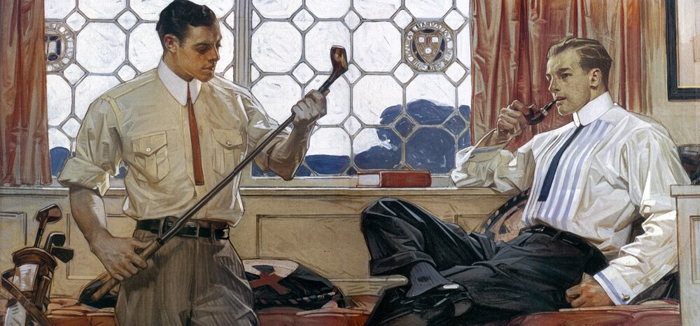
Elegant, white, and refined, in the aspirational manner of the day, the Arrow Man wasn’t just well-dressed; he was sporty, masculine (as defined at the time) and largely uninterested in anything but spending time with other men, from whom he seemingly could not tear his gaze. Leyendecker was also a popular and famous cover illustrator for magazines like Colliers and The Saturday Evening Post. In fact, he was one of Norman Rockwell’s biggest influences.
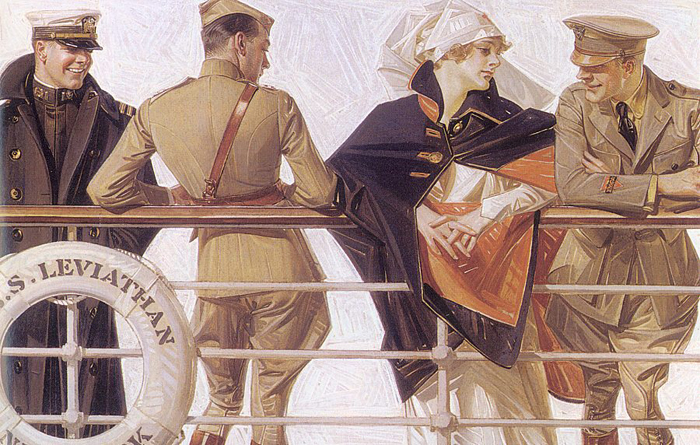
Leyendecker, in the manner of the times, never lived his life as an out gay man and to be completely accurate about it, there’s no way to say with absolute certainty which way he swung. But even if you ignore that he lived with one man for several decades until his death – that man being Charles Beach, the legendarily beautiful young model upon whom most of Leyendecker’s men were based (note how they almost all have the same face) – it’s hard to deny that his artwork celebrated male beauty and tended to depict men whose interests and attention seemed to lie solely with other men.
But putting aside all of that, it’s perhaps best to let his more … carnal artwork make the point for us:
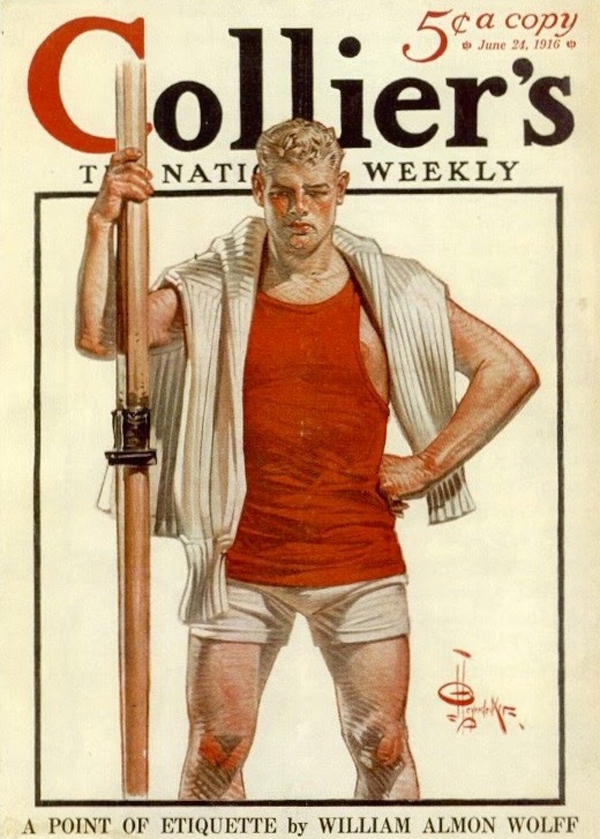
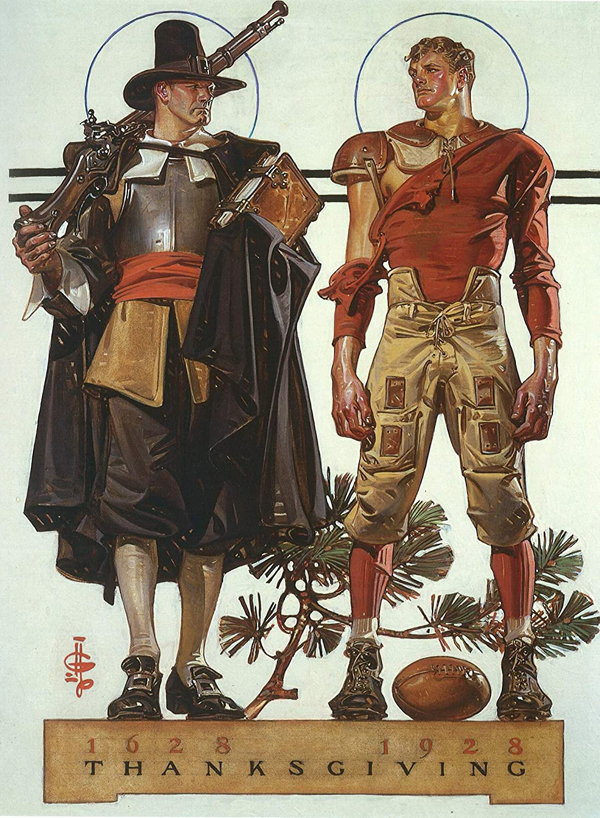
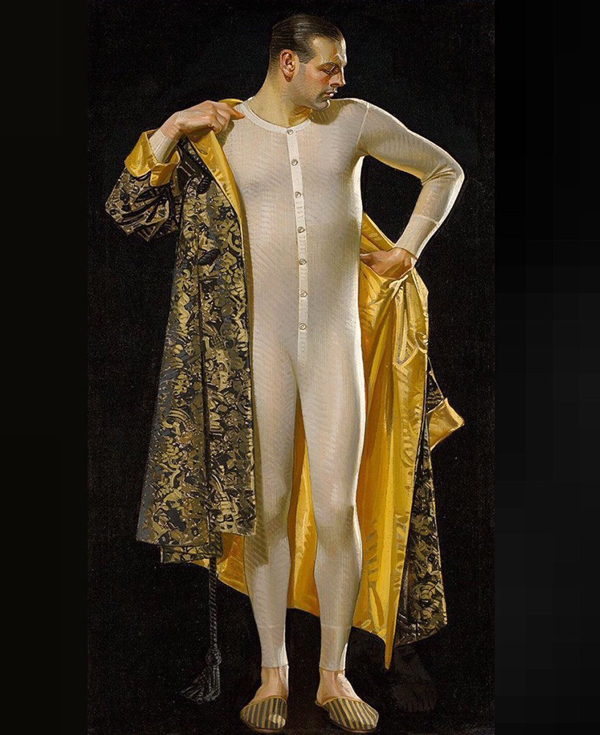
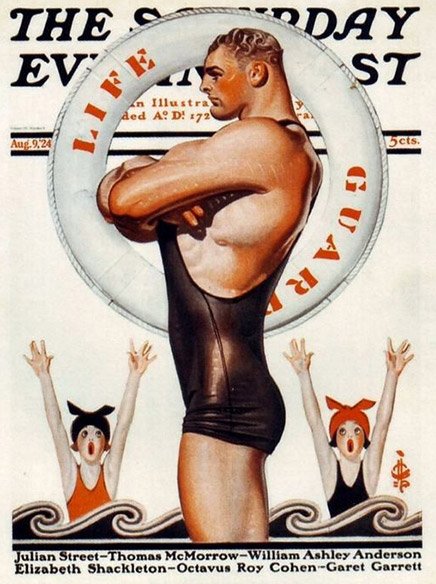
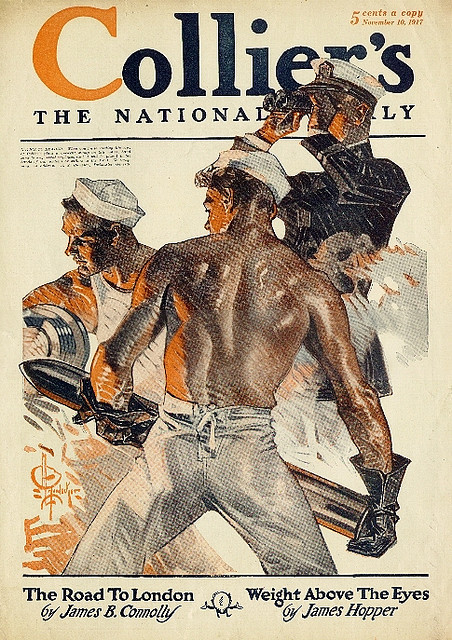
It’s not just that J.C. Leyendecker had a knack for drawing stunningly beautiful men based on his lifelong living partner, it’s that he drew them in a shockingly erotic and body-based manner at a time – the early 1900s through the ’30s – when there wasn’t much of an audience for such things in the mainstream. You only need to look at the male movie stars of this period to note that the mainstream beauty ideal as it pertained to men owed little to Leyendecker’s impossibly square-jawed, broad-shouldered, athletic and partially undressed subjects. On the other hand, gay erotic artists from Tom of Finland in the mid-Century all the way up to the present day were influenced quite a bit by Leyendecker’s fascination with muscular, square-jawed men with low body fat, no body hair, almost caveman-heavy brows, and in as little clothing as he could get away with when possible. The number of queer men who spanked it to that very same iconic image in the last hundred years is uncountable, but trust: a LOT of them did.
J.C. Leyendecker died of a heart attack in 1954 after reportedly ordering his partner Charles Beach to burn all his private papers and correspondence. You can read more about him – and the many male artists he inspired – in our book.
Warrior Queen Red Carpet Showdown: Tilda Swinton vs. Zendaya Next Post:
“The Great” Teaser Trailer Has Us Good and Ready For It
Please review our Community Guidelines before posting a comment. Thank you!

